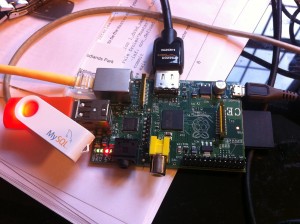In MariaDB 10.2.12, these two don’t yet work together. GTID = Global Transaction ID. In the master-slave asynchronous replication realm, this means that you can reconnect a slave to another server (change its master) and it’ll happily continue replicating from the correct point. No more fussing with filenames and offsets (which of course will both differ on different machines).
So in concept the GTIID is “globally” unique – that means it’s consistent across an entire infra: a binlogged write transaction will have the same GTID no matter on which machine you look at it.
- OK: if you are transitioning from async replication to Galera cluster, and have a cluster as slave of the old infra, then GTID will work fine.
- PROBLEM: if you want to run an async slave in a Galera cluster, GTID will currently not work. At least not reliably.
The overview issue is MDEV-10715, the specific problem is documented in MDEV-14153 with some comments from me from late last week. MDEV-14153 documents cases where the GTID is not in fact consistent – and the way in which it isn’t is most disturbing.
The issue appears as “drift”. A GTID is made up of R-S-# where R is replication domain (0 unless set by an app), S for server-id where the write was originally done, and # which is just a number. The only required rule for the # is that that each next event has to have a higher number than the previous. In principle there could be #s missing, that’s ok.
In certain scenarios, the # part of the GTID falls behind on the “other nodes” in the Galera cluster. There was the node where the statement was first issued, and then there are the other nodes which pick up the change through the Galera (wsrep) cluster mechanism. Those other nodes. So at that point, different nodes in the cluster have different GTIDs for the same query. Not so great.
To me, this looked like a giant red flag though: if a GTID is assigned on a commit, and then replicated through the cluster as part of that commit, it can’t change. Not drift, or any other change. So the only possible conclusion must be that it is in fact not passed through the cluster, but “reinvented” by a receiving cluster node, which simply assumes that the current event from a particular server-id is previous-event id + 1. That assumption is false, because as I mentioned above it’s ok for gaps to exist. As long as the number keeps going up, it’s fine.
Here is one of the simplest examples of breakage (extract from a binlog, with obfuscated table names):
# at 12533795 #180704 5:00:22 server id 1717 end_log_pos 12533837 CRC32 0x878fe96e GTID 0-1717-1672559880 ddl /*!100001 SET @@session.gtid_seq_no=1672559880*//*!*/; # at 12533837 #180704 5:00:22 server id 1717 end_log_pos 12534024 CRC32 0xc6f21314 Query thread_id=4468 exec_time=0 error_code=0 SET TIMESTAMP=1530644422/*!*/; SET @@session.time_zone='SYSTEM'/*!*/; DROP TEMPORARY TABLE IF EXISTS `qqq`.`tmp_foobar` /* generated by server */ /*!*/;
Fact: temporary tables are not replicated (imagine restarting a slave, it wouldn’t have whatever temporary tables were supposed to exist). So, while this event is stored in the binary log (which it is to ensure that if you replay the binlog on a machine, it correctly drops the temporary table after creating and using it), it won’t go through a cluster. Remember that Galera cluster is essentially a ROW-based replication scheme; if there are changes in non-temporary tables, of course they get replicated just fine. So if an app creates a temporary table, does some calculations, and then inserts the result of that into a regular table, the data of that last bit will get replicated. As it should. In a nutshell, as far as data consistency goes, we’re all fine.
But the fact that we have an event that doesn’t really get replicated creates the “fun” in the “let’s assume the next event is just the previous + 1” logic. This is where the drift comes in. Sigh.
In any case, this issue needs to be fixed by let’s say “being re-implemented”: the MariaDB GTID needs to be propagated through the Galera cluster, so it’s the same on every server, as it should be. Doing anything else is always going to go wrong somewhere, so trying to catch more cases like the above example is not really the correct way to go.
If you are affected by this or related problems, please do vote on the relevant MDEV issues. That is important! If you need help tracking down problems, feel free to ask. If you have more information on the matter, please comment too! I’m sure this and related bugs will be fixed, there are very capable developers at MariaDB Corp and Codership Oy (the Galera company). But the more information we can provide, the better. It often helps with tracking down problems and creating reproducible test cases.


